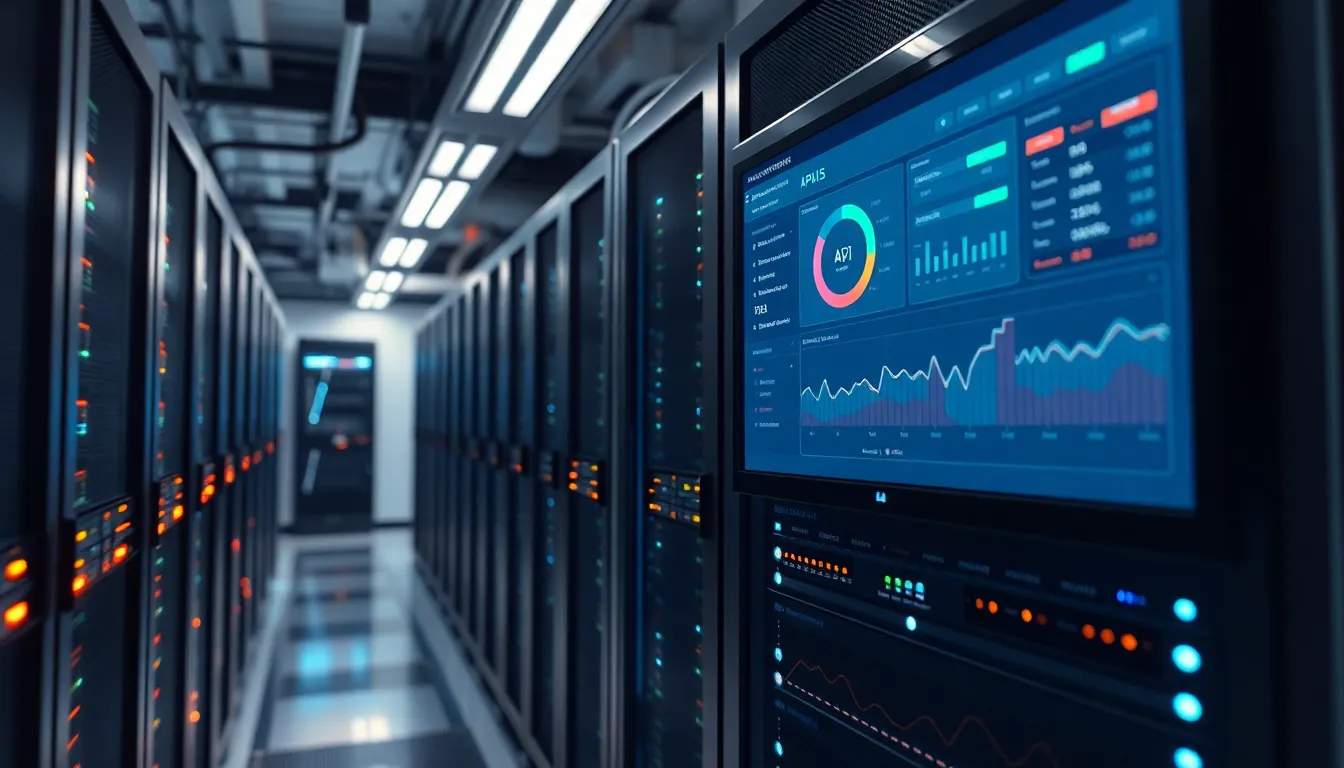In a world where every click counts, API monitoring is the unsung hero that keeps the digital realm running smoothly. Imagine trying to enjoy your favorite streaming service only to find it buffering like it’s stuck in a time warp. Frustrating, right? That’s where API monitoring steps in, ensuring your applications communicate seamlessly and efficiently.
Table of Contents
ToggleOverview of API Monitoring
API monitoring assesses the performance and reliability of application programming interfaces. This process ensures that APIs operate correctly, which significantly affects overall system health. Monitoring includes tracking response times, error rates, and data throughput, providing insights into potential problems.
Effective API monitoring tools collect metrics that help identify trends. Response time metrics, for example, indicate how quickly an API processes requests, while error rates reveal issues in data handling or server interactions. Organizations rely on real-time alerts to detect anomalies; these notifications facilitate prompt responses to emerging issues.
Comprehensive logging captures API usage, allowing analysis of user interactions. This information aids in understanding how users engage with the services. Insight into usage patterns informs future enhancements, optimizing overall performance and user experience.
Security monitoring also plays a vital role. API vulnerabilities can expose sensitive data, making it essential to track access patterns and implement protective measures. Keeping an eye on unusual activity helps mitigate risks and safeguard user information.
Integrating API monitoring into the development lifecycle contributes to continuous delivery and agile practices. As teams develop and deploy updates, monitoring ensures that new changes do not disrupt existing functionalities. Regular evaluation fosters improvements, leading to increasingly robust applications.
Prioritizing API monitoring leads to improved service reliability and user satisfaction. Businesses gain the ability to maintain competitive advantage through effective management of their APIs. Overall, API monitoring is integral to modern digital service architecture.
Importance of API Monitoring

API monitoring plays a crucial role in ensuring reliable digital service operation. Monitoring focuses on improving performance and user experience.
Performance Tracking
Tracking performance metrics enables companies to assess response times and data throughput. It empowers teams to gather insights into user interactions. Understanding trends aids in optimizing resources for better responsiveness. Organizations leverage this data to identify areas needing improvement. Effective performance tracking reveals how well APIs handle user demands, contributing to overall satisfaction.
Error Detection
Detecting errors promptly safeguards application reliability. Monitoring identifies issues, such as timeouts and broken links, before they impact users. Organizations receive real-time alerts, allowing for quick resolutions. An early detection system prevents minor problems from escalating into major outages. Comprehensive error reporting assists in root cause analysis, enabling teams to fix underlying issues. By prioritizing error detection, businesses enhance operational stability and improve user trust.
Key Features of Effective API Monitoring
Effective API monitoring includes essential features that help maintain service performance and user experience. Two critical aspects are real-time analytics and alerting mechanisms.
Real-Time Analytics
Real-time analytics provide immediate insights into API performance. Collecting data on response times, error rates, and throughput enables quick evaluation of service quality. Metrics allow developers to identify performance bottlenecks promptly. Observing usage patterns also helps in making data-driven decisions. By analyzing trends, teams can optimize APIs, ensuring they meet user demands consistently. Fast detection of anomalies leads to proactive adjustments, enhancing reliability.
Alerting Mechanisms
Alerting mechanisms play a vital role in API monitoring. Automated alerts notify teams of critical issues as they arise. Setting thresholds for performance metrics ensures timely intervention before problems escalate. These alerts can be customized based on specific needs, focusing on areas like latency and failure rates. Responding to alerts promptly means maintaining application stability and user satisfaction. Integration with communication tools facilitates quick collaboration among team members to address issues effectively.
Popular API Monitoring Tools
A range of API monitoring tools enhances the performance and reliability of application programming interfaces. These solutions help teams manage and optimize their digital services effectively.
Tool Comparison
Comparing different tools highlights their strengths and weaknesses. Postman serves as a user-friendly option, focusing on API development and testing. Datadog offers comprehensive monitoring solutions with powerful analytics features. New Relic excels in real-time performance monitoring, providing deep insights into API behavior. Apigee stands out with robust security features, ensuring safe API interactions. Each tool caters to varying business needs, making it essential to evaluate them according to specific requirements.
Features and Pricing
Evaluating features reveals what each tool offers. Postman provides a free tier, making it accessible for small teams. Datadog operates on a subscription model, pricing per host and offering additional functionalities for scaling organizations. New Relic also follows this model, with plans tailored for different levels of usage. Apigee, while more premium, delivers extensive features suitable for enterprise environments. Companies should assess their budgets and necessary features to determine the best fit for their API monitoring needs.
Best Practices for API Monitoring
Effective API monitoring practices enhance stability and user experience. Implementing targeted strategies ensures optimal performance.
Implementing Monitoring Strategies
Establish comprehensive monitoring strategies to capture API behavior effectively. Utilize unique metrics such as response time, error rates, and transaction throughput to evaluate performance. Select tools that provide real-time analytics to identify performance bottlenecks swiftly. Customize alerting configurations based on API usage patterns, allowing for timely intervention. Establish baseline performance metrics to identify deviations and potential issues. Incorporating automated testing into the monitoring process ensures continuous evaluation without manual oversight. Regular review of monitoring configurations aids in addressing evolving application requirements.
Continuous Improvement
Adopting a mindset of continuous improvement enhances API performance over time. Collect feedback from monitoring data to identify growth areas regularly. Coordinate development teams to address issues identified during monitoring promptly. Embrace user feedback as a valuable resource, helping to pinpoint common pain points. Focus on streamlining processes and updating documentation for user ease. Establish routine assessments of monitoring tools to ensure they meet changing demands. Integrating findings into future releases fosters a culture of ongoing enhancement and resilience.
API monitoring is essential for organizations aiming to deliver seamless digital experiences. By employing effective monitoring practices, businesses can proactively identify and resolve issues, ensuring that their applications run smoothly. This not only enhances user satisfaction but also strengthens the overall reliability of services.
Choosing the right tools and implementing best practices fosters a culture of continuous improvement. As technology evolves, so do the demands on APIs. Staying ahead of performance metrics and security considerations will empower organizations to adapt and thrive in a competitive landscape. Ultimately, robust API monitoring is a key component in achieving operational excellence and delivering value to users.



